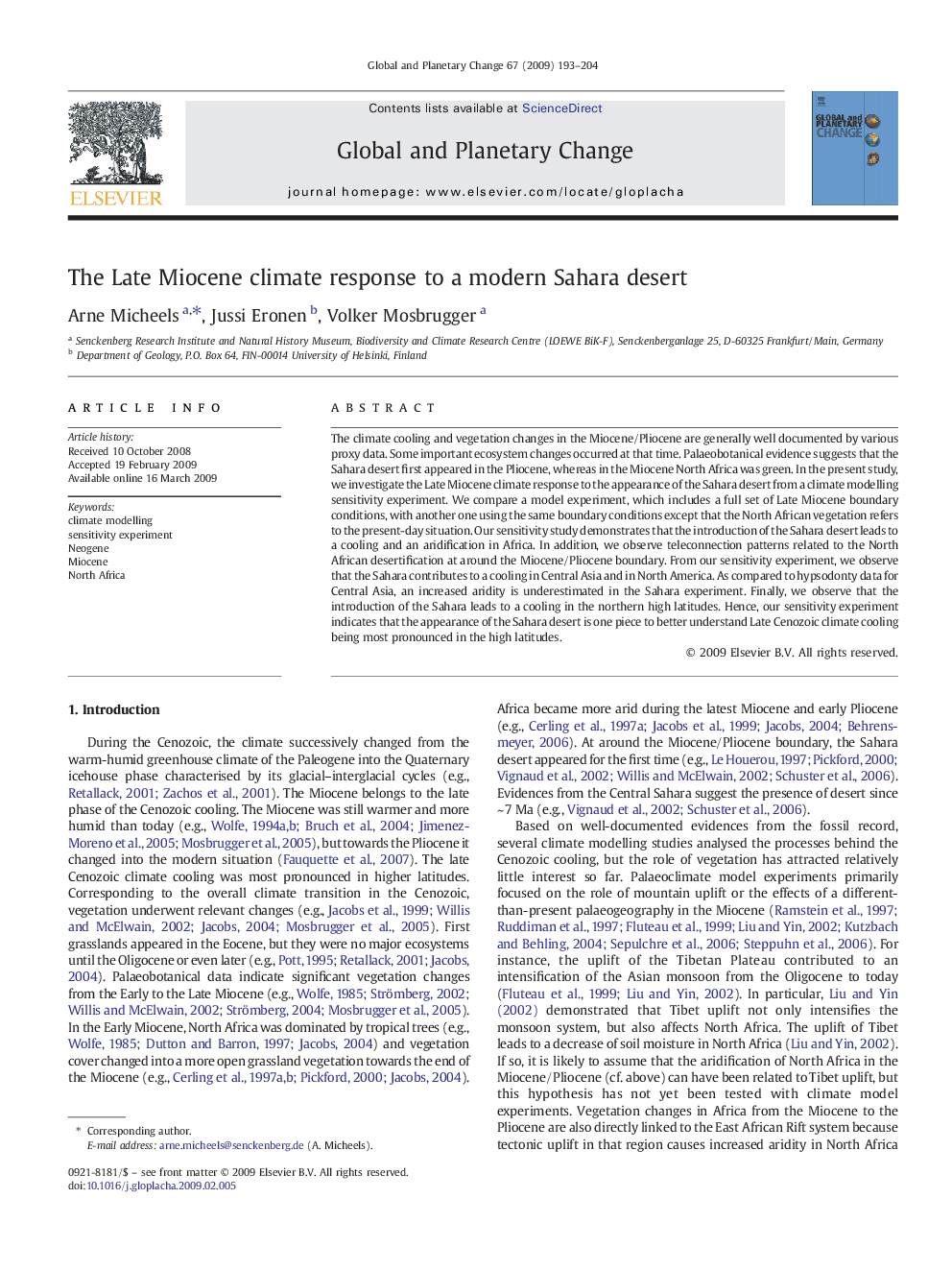| Article ID | Journal | Published Year | Pages | File Type |
|---|---|---|---|---|
| 4464047 | Global and Planetary Change | 2009 | 12 Pages |
The climate cooling and vegetation changes in the Miocene/Pliocene are generally well documented by various proxy data. Some important ecosystem changes occurred at that time. Palaeobotanical evidence suggests that the Sahara desert first appeared in the Pliocene, whereas in the Miocene North Africa was green. In the present study, we investigate the Late Miocene climate response to the appearance of the Sahara desert from a climate modelling sensitivity experiment. We compare a model experiment, which includes a full set of Late Miocene boundary conditions, with another one using the same boundary conditions except that the North African vegetation refers to the present-day situation. Our sensitivity study demonstrates that the introduction of the Sahara desert leads to a cooling and an aridification in Africa. In addition, we observe teleconnection patterns related to the North African desertification at around the Miocene/Pliocene boundary. From our sensitivity experiment, we observe that the Sahara contributes to a cooling in Central Asia and in North America. As compared to hypsodonty data for Central Asia, an increased aridity is underestimated in the Sahara experiment. Finally, we observe that the introduction of the Sahara leads to a cooling in the northern high latitudes. Hence, our sensitivity experiment indicates that the appearance of the Sahara desert is one piece to better understand Late Cenozoic climate cooling being most pronounced in the high latitudes.
